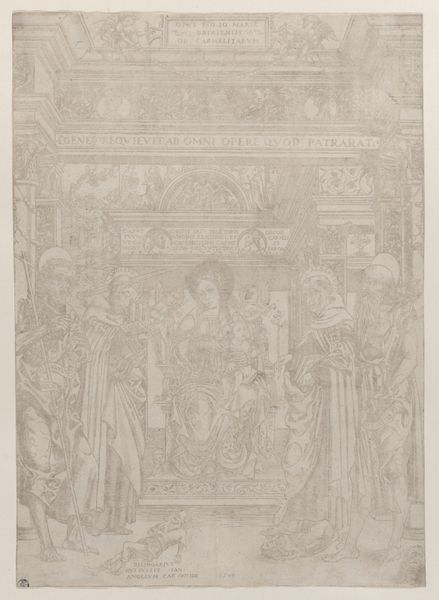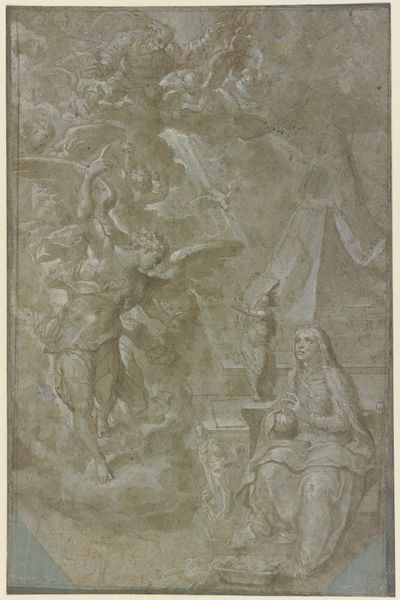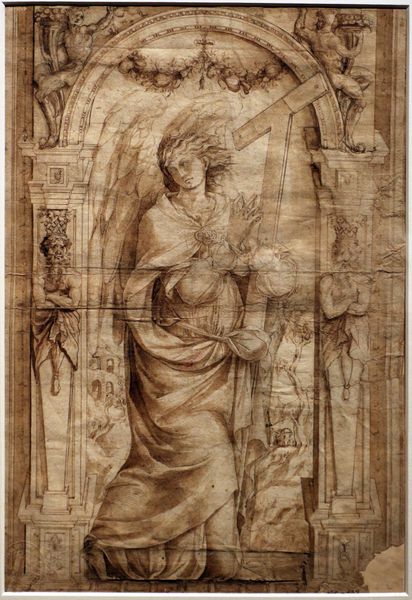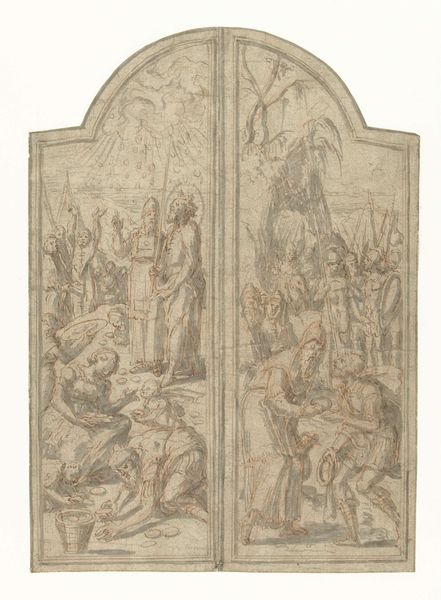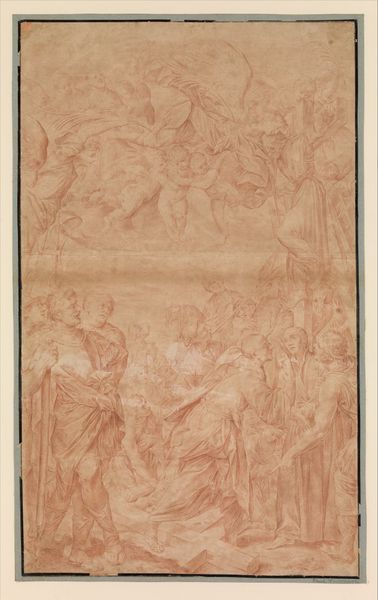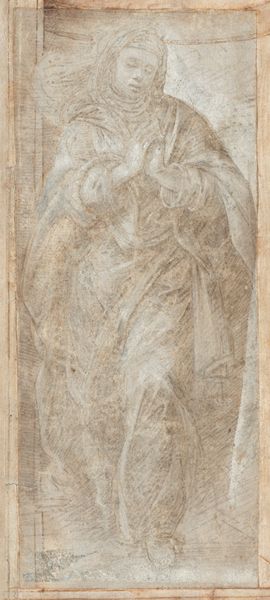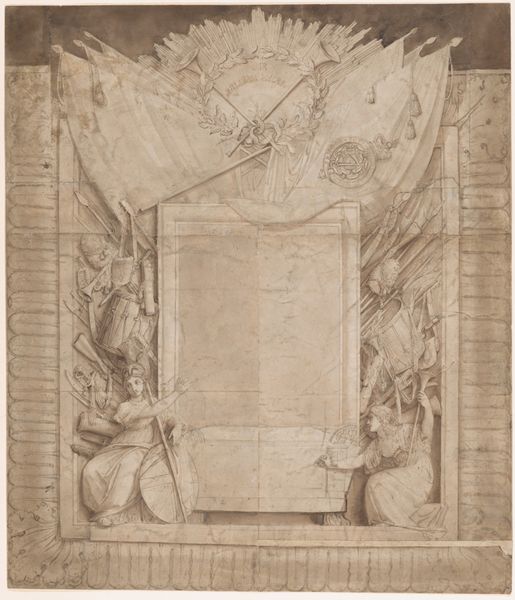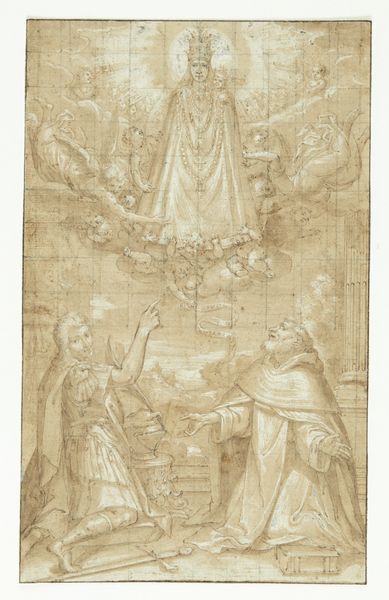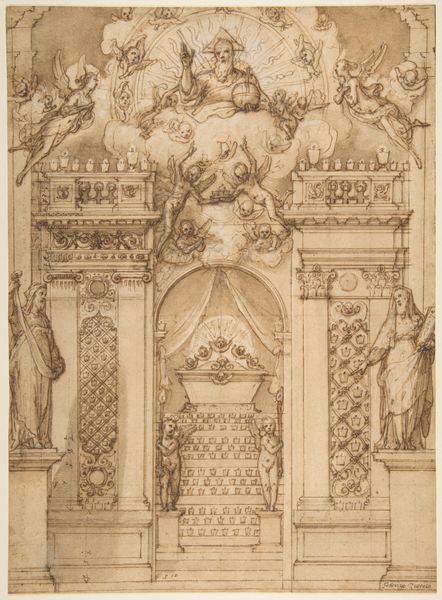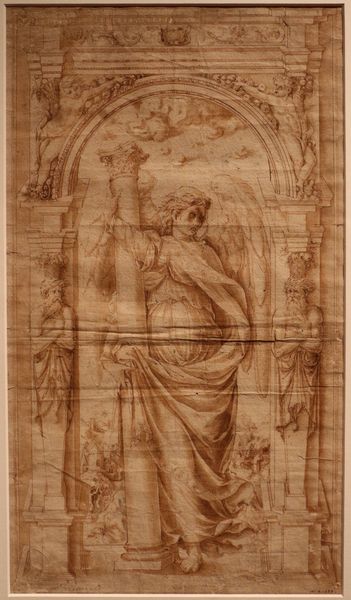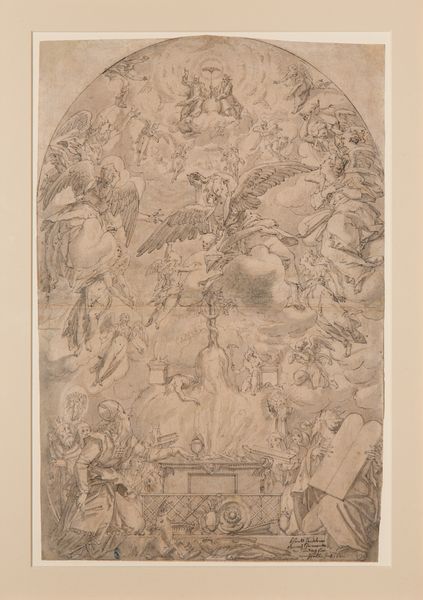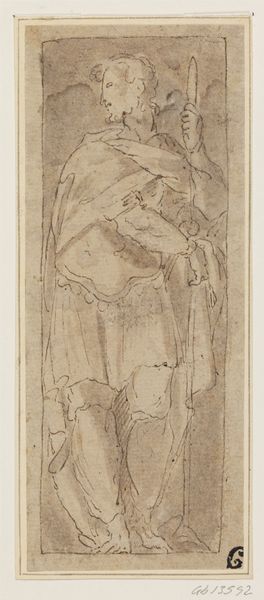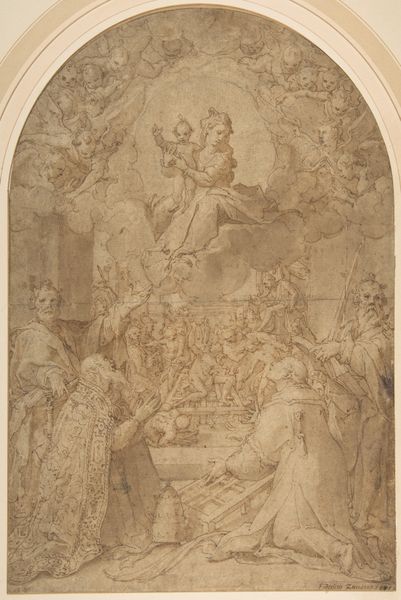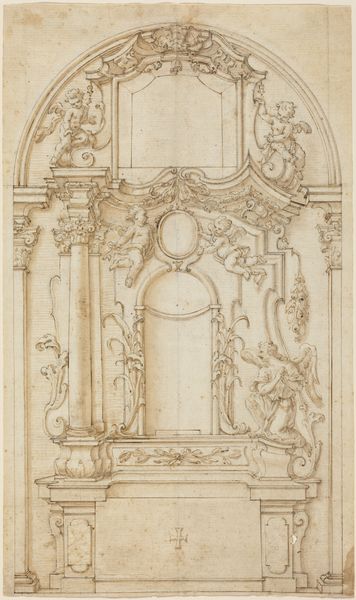
Saint Leonard and Four Episodes from His Life 1495 - 1510
0:00
0:00
drawing, print, paper, ink, pen, charcoal
#
portrait
#
drawing
#
medieval
#
narrative-art
# print
#
human-figures
#
charcoal drawing
#
figuration
#
paper
#
ink
#
pen
#
charcoal
#
history-painting
#
miniature
Dimensions: Sheet: 17 × 10 3/8 in. (43.2 × 26.4 cm) arch shape at the top, max.
Copyright: Public Domain
Editor: Here we have Francesco di Paolo da Montereale's "Saint Leonard and Four Episodes from His Life," made sometime between 1495 and 1510, using pen, ink, and charcoal on paper. It’s quite delicate; the muted tones lend it a somewhat dreamlike quality. What do you see in this piece? Curator: What I see here is more than just a depiction of a saint. I see a visual narrative deeply embedded within its historical context. Leonard, a figure known for liberating prisoners, represents resistance against unjust power. Note how the artist places Leonard centrally, almost as a bulwark, flanked by scenes of his life. What statement is the artist making through this composition, given the turbulent social and political landscape of the time? Editor: That's interesting. I hadn't considered the social context of prisoners and power. Curator: Think about who typically commissioned such works, and what messages they intended to convey. The placement of scenes – one depicting imprisonment, another, possibly liberation – prompts a dialogue. What do you make of the figures in the upper register, the ethereal beings? Are they passive observers, or active participants? Editor: Perhaps they represent divine approval, a higher power sanctioning Leonard's actions? It adds another layer to the narrative, giving it a spiritual dimension. Curator: Exactly! The miniature scale is also significant. What might the choice of such intimate dimensions say about the artwork’s intended audience, or its function within society? Was this intended for public display, or more personal devotion? Editor: This makes me consider how art from this period serves not only aesthetic but also didactic and social purposes. Thanks for shedding light on those dynamics. Curator: My pleasure! It is by exploring the artwork’s relation to society, to power structures, and to identity, that we unlock its fullest meaning and ongoing relevance.
Comments
No comments
Be the first to comment and join the conversation on the ultimate creative platform.
